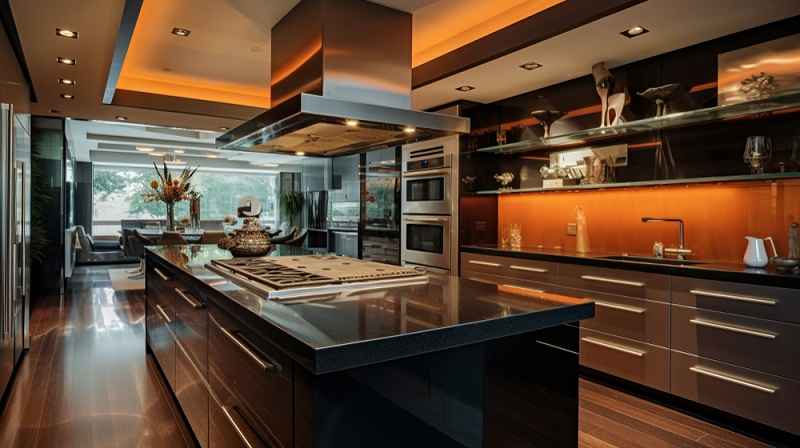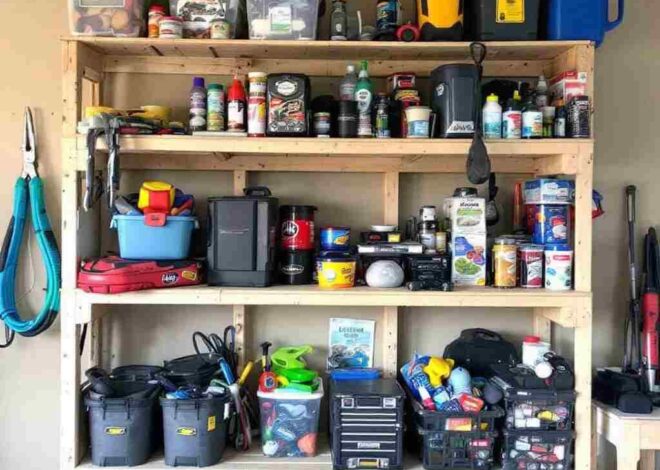
The Ultimate DIY Kitchen Table Project for Beginners
Are you ready to roll up your sleeves and transform your kitchen into the heart of your home? If you’ve ever dreamed of creating a stunning centerpiece that not only elevates your dining experience but also showcases your personal style, then you’re in for a treat! Welcome to “The Ultimate DIY Kitchen Table Project for Beginners”—where creativity meets craftsmanship. Whether you’re an aspiring woodworker or just someone eager to add a personal touch to their space, this step-by-step guide will walk you through everything you need to know. Get ready to impress family and friends with a beautiful table that’s not just functional but tells your story. Let’s dive into the world of DIY magic and craft something extraordinary together!
Introduction to the DIY Kitchen Table Project
Are you ready to transform your home with a personal touch? Building your own kitchen table is not just a project; it’s an opportunity to create a centerpiece that reflects your style and brings everyone together. Imagine gathering around a table crafted by your hands, sharing meals, stories, and laughter. This DIY kitchen table project is perfect for beginners looking to channel their creativity while adding functionality to their space. Whether you’re inspired by rustic charm or modern elegance, diving into this endeavor will unleash your inner craftsman—and it’s easier than you think! Let’s explore the journey from planning and designing all the way through assembly and finishing touches. Your dream kitchen table awaits!
Benefits of Building Your Own Kitchen Table
Building your own kitchen table offers a sense of accomplishment that store-bought options just can’t match. Imagine crafting a piece tailored specifically to your space and needs.
Cost savings are another significant advantage. Purchasing materials in bulk is often cheaper than buying pre-made furniture. Plus, you’ll avoid the markup that retailers impose on their products.
Personalization is key when designing your table. You can choose colors, styles, and finishes that reflect your taste and blend seamlessly with your home décor. This level of customization creates pieces that feel more like yours.
Moreover, DIY projects foster creativity and problem-solving skills. Overcoming challenges during construction boosts confidence while enhancing practical skills you can use in future endeavors.
Lastly, every meal will carry sentimental value when shared around a table you’ve built yourself. It becomes not just furniture but a cherished gathering spot for family and friends.
Planning and Designing Your Kitchen Table
Planning your kitchen table design starts with envisioning its purpose. Will it be a gathering place for family meals or an art space for projects? Understanding its role helps shape the overall look and feel.
Next, consider materials that fit your lifestyle. Solid wood offers durability and warmth, while metal can bring a modern edge. Plywood is often budget-friendly but still versatile enough for creative designs.
Accurate measurements are crucial. Measure your available space carefully to avoid any surprises later on. Make sure to leave ample room around the table for chairs and movement.
Personal style should shine through in your design choices. Incorporate elements like color, texture, or patterns that resonate with you—whether that’s rustic charm or sleek minimalism—make it uniquely yours!
-
Choosing the Right Materials
Choosing the right materials is crucial for your kitchen table design. The type of wood will significantly impact both durability and aesthetics. Popular choices include oak, pine, and maple. Oak offers strength and a rich grain, while pine is lighter on the wallet but still charming.
Consider finish options too. A natural oil or stain can enhance wood’s beauty while protecting it from spills and scratches.
Don’t forget about hardware! Legs made from metal can add an industrial flair or keep things modern with sleek lines.
If you’re feeling adventurous, explore mixed materials like reclaimed wood combined with glass tops for a unique touch. Each choice impacts not just look but functionality as well.
Finally, think about weight—heavier tables offer sturdiness but may be difficult to move around. Assess your space before making decisions to ensure everything fits perfectly in your home.
-
Measuring and Cutting Techniques
Measuring accurately is the cornerstone of any successful DIY kitchen table design. Start with a reliable tape measure and take your time to ensure precision. Double-check all measurements before cutting; it’s better to measure twice than cut once.
When marking your cuts, use a straight edge or square for clean lines. This will help prevent mistakes that could lead to wasted materials. A simple pencil mark can make all the difference.
For cutting, consider using a circular saw or miter saw for straight edges. If you’re new to power tools, practice on scrap wood first. Take smooth, steady strokes while keeping your hands clear of the blade.
Remember, safety comes first—always wear protective eyewear and gloves during this process. With careful measuring and cutting techniques, you’ll be well on your way to crafting that stunning kitchen table you’ve envisioned.
-
Incorporating Your Personal Style
Your kitchen table should reflect who you are. Think about the materials and colors that resonate with your style. Do you love rustic charm? Consider reclaimed wood for a warm, inviting look.
If modern aesthetics appeal to you, sleek lines and a minimalist approach could be the way to go. Experiment with finishes like matte or glossy paint; they can dramatically change the vibe of your table.
Adding personal touches is key. You might want to stencil designs on the tabletop or use unique hardware for an eclectic twist. Don’t shy away from mixing textures—pair smooth metal legs with a wooden top for contrast.
Consider functionality as well. If you’re an entertainer, build in extra seating or create extendable features for guests. Remember, each choice showcases your personality while enhancing your home’s ambiance.
Step-by-Step Guide to Building Your Kitchen Table
Gathering the right tools and materials is crucial for your kitchen table project. Start with a sturdy workbench, measuring tape, saw, drill, and screws. Make sure you have quality wood that fits your design.
Once everything is ready, follow your plan closely. Begin by cutting the tabletop pieces to size. Carefully measure twice before making any cuts to ensure accuracy.
Next, assemble the legs using brackets for added stability. Attach them securely beneath the tabletop. This step will give you a solid foundation.
After assembly comes sanding and finishing touches. Smooth out rough edges with sandpaper to achieve a polished look. Choose paint or stain that complements your style—color can transform your kitchen table design dramatically.
Finally, don’t rush! Take time at each stage to inspect your work before moving forward.
-
Gathering Tools and Materials
Before diving into your kitchen table design, gathering the right tools and materials is essential. Start by creating a checklist to ensure you have everything at hand.
You’ll need basic woodworking tools like a miter saw, drill, and sander. Don’t forget about measuring tapes and clamps—they’re crucial for accuracy during assembly.
For materials, consider sturdy wood options such as pine or oak. Each type has its own character and durability. If you’re feeling adventurous, reclaimed wood can add rustic charm to your project.
Safety gear should be part of your collection too. Protective glasses and gloves will keep you safe while working on this hands-on endeavor.
Finally, think about finishes—stains or sealants that resonate with your style can elevate the final look of your kitchen table. Having all these elements organized will make the building process smoother and more enjoyable.
-
Assembly Instructions
Start by laying out all the pieces of your kitchen table. Organize them to ensure everything is easy to find. This will save you time during assembly.
Begin with the tabletop. Attach it securely to the legs using wood screws or brackets, ensuring it’s centered correctly for stability. Check that all corners are flush and even.
Next, add any support beams if included in your design. These can enhance strength and durability, especially for larger tables.
Make sure every joint is tight and secure as this will determine how sturdy your table feels post-assembly.
Once assembled, flip the table upright gently. Use a level to check its balance; adjustments may be needed at this stage.
Stand back and admire your work before moving on to applying finishing touches!
-
Finishing Touches
Once your kitchen table is assembled, it’s time for the finishing touches. This stage can transform a functional piece into a stunning centerpiece.
Start with sanding the surface to achieve a smooth finish. Use finer grit sandpaper for that silky feel. Pay special attention to corners and edges; they often need extra care.
Next, choose a stain or paint that complements your home’s decor. A rich walnut stain adds warmth, while white paint offers a modern touch. Apply multiple coats for depth, allowing each layer to dry completely.
Sealing is essential too! A polyurethane finish protects against spills and scratches while giving your table that beautiful shine.
Consider adding felt pads under legs to prevent scratching floors. It’s an easy step that enhances longevity without compromising style.
Tips for Success and Troubleshooting Common Issues
When embarking on your kitchen table design project, preparation is key. Make sure to read through all instructions and familiarize yourself with the tools you’ll be using.
If you’re facing alignment issues during assembly, don’t panic. It’s often due to uneven surfaces or misplaced screws. Double-check each joint before tightening anything fully.
Clamps can be a lifesaver for ensuring stability while the glue dries. They help maintain straight edges and reduce gaps in joints.
Also, keep extra wood filler handy for any small imperfections that may arise after sanding. It’s an easy fix that enhances the final look of your table.
Lastly, always take breaks when needed. A fresh pair of eyes can catch mistakes before they become bigger problems and make the process more enjoyable overall.
Inspiration and Creative Ideas for Customization
When it comes to kitchen table design, the possibilities are endless. Consider incorporating mixed materials for a modern touch. Combining wood with metal accents can create a stunning contrast that stands out in any space.
Stenciling or hand-painting patterns on the tabletop adds a personal flair. Think about geometric shapes or floral designs that resonate with your style.
For those who love nature, why not add live-edge detailing? It preserves the natural shape of the wood and brings an organic feel to your dining area.
Don’t forget about color! A bold stain or vibrant paint can transform an ordinary piece into something extraordinary.
Adding unique legs—like hairpin styles or reclaimed barn wood bases—can also elevate your design game significantly. Your kitchen table should reflect you; let your creativity shine through every detail.
Conclusion: Enjoying Your Handmade Kitchen Table
Creating your own kitchen table is not just a project; it’s an experience filled with creativity and satisfaction. Once you’ve completed your DIY kitchen table, you’ll find that it adds character to your space.
Take a moment to appreciate the effort you’ve put into designing and building something unique to you. Whether it’s a rustic farmhouse style or a sleek modern look, every detail reflects your taste and personality.
As you gather around this handmade piece, enjoy the memories made over shared meals and conversations. Your custom kitchen table will serve as more than just furniture; it becomes a centerpiece for family gatherings, celebrations, and quiet moments alike.
So go ahead—embrace the joy of building something truly yours!


